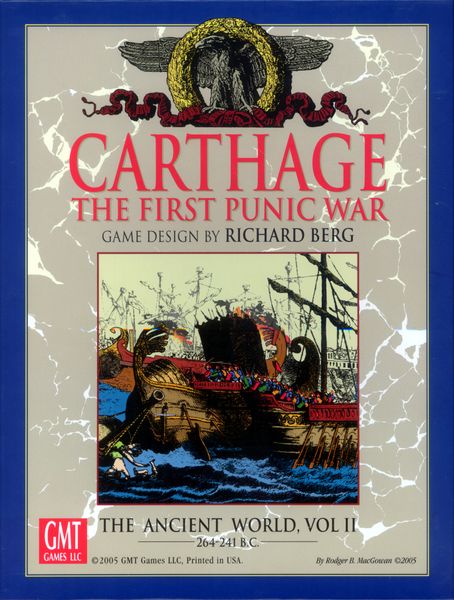Carthage: The First Punic War – The Ancient World, Vol. II (2005) Board Game
Carthage: The First Punic War – The Ancient World, Vol. II is a board game that takes place during the First Punic War between Rome and Carthage, which lasted from 264 to 241 BC. Players take on the roles of either the Romans or the Carthaginians, strategizing and deploying their forces to achieve victory in this ancient conflict.
Game Components of Carthage: The First Punic War – The Ancient World, Vol. II
How To Setup Carthage: The First Punic War – The Ancient World, Vol. II
Setting up the game involves placing the maps, distributing the counters according to the scenario, and familiarizing yourself with the play-aid charts. The game comes with a detailed rulebook that guides players through the initial setup, including the placement of fleets, armies, and garrisons. The setup is intricate due to the game’s complex mechanics, but it lays the groundwork for an immersive and strategic gameplay experience.
Gameplay Mechanics and Game Objective
Player Experience
Playing **Carthage: The First Punic War** is a deeply engaging and demanding experience. The game requires meticulous planning, strategic decision-making, and a good understanding of ancient warfare. The inclusion of various scenarios, from the full twenty-year First Punic War to shorter scenarios like Regulus’s invasion of Carthage, offers a versatile gaming experience. Players must navigate complex naval battles, manage political instability, and execute sieges, all while dealing with the unpredictability of the combat system.
Pros
Cons
Personal Thoughts on Carthage: The First Punic War – The Ancient World, Vol. II
This game is ideal for experienced wargamers and history enthusiasts who appreciate intricate mechanics and strategic depth. It is not a game for casual players due to its complexity and the significant time required to play through the main scenario. However, for those who enjoy immersing themselves in ancient history and tactical warfare, **Carthage: The First Punic War** offers a rewarding and challenging experience.
We are supported by our audience. When you purchase through links on our site, we may earn an affiliate commission, at no extra cost for you. Learn more.

